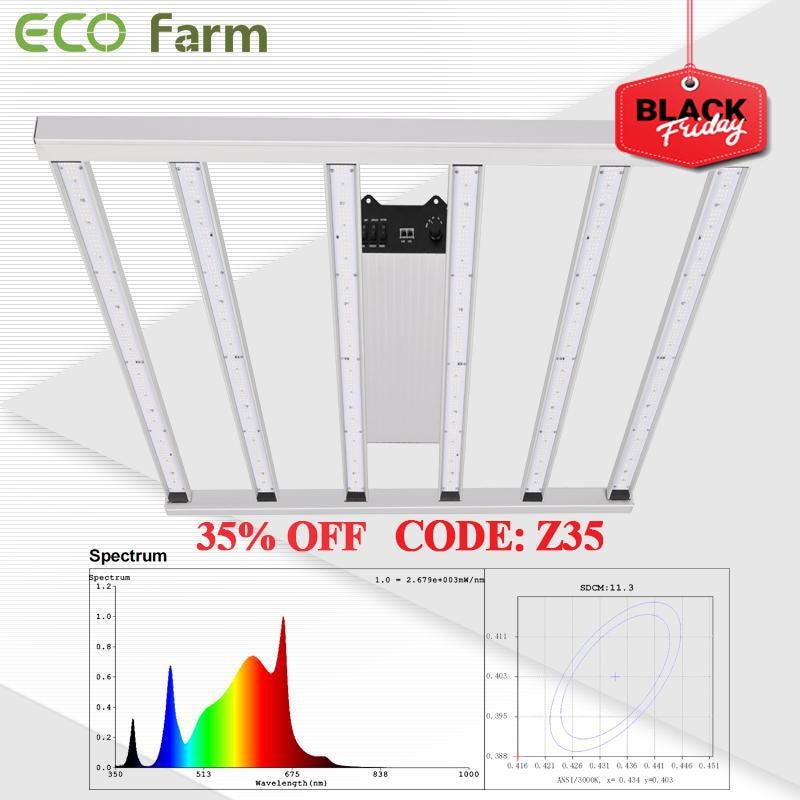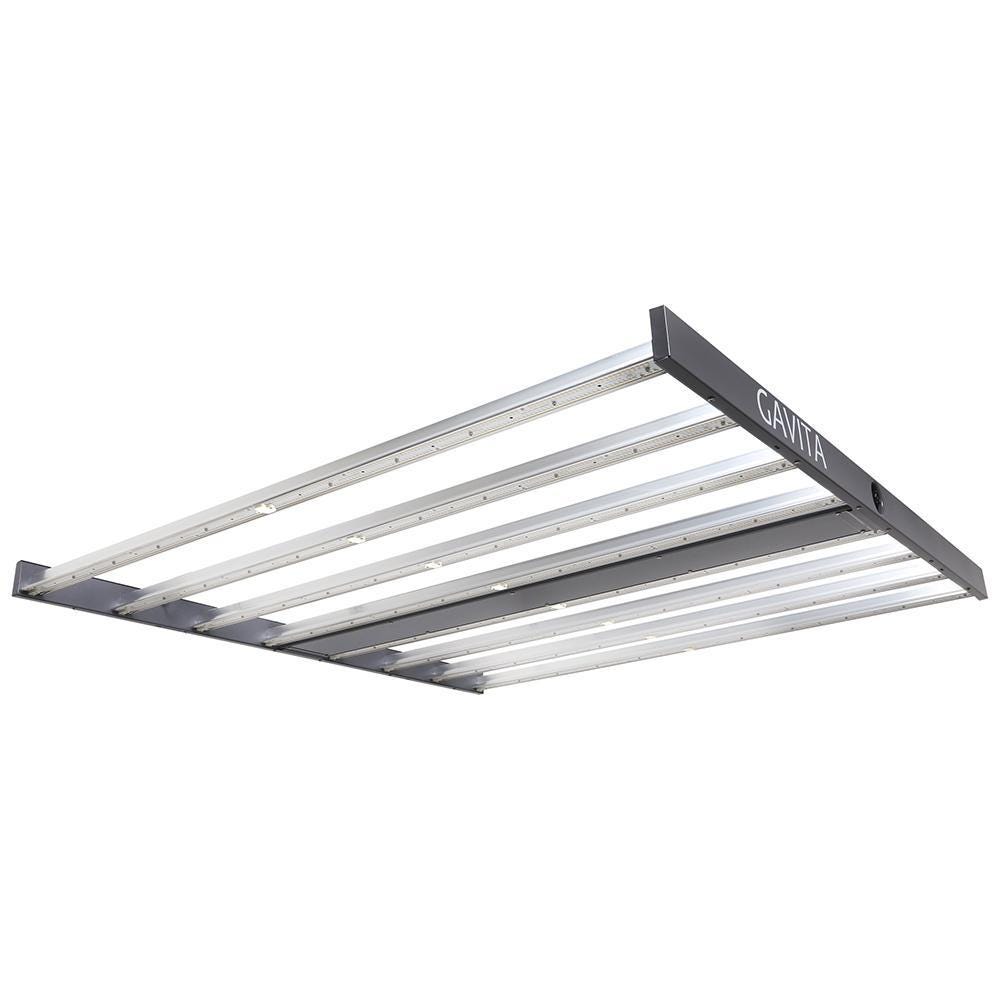ECO Farm Z6–600 Samsung LM301B LED Grow Light VS Gavita Pro 1700e Gen2 LED Grow Light
LED grow lights play an important role in growing plants. These are considered powerful enough with the full spectrum mainly suitable for plants growth. LED grow lights mainly require the exact amount as well as PAR value. LED grow light especially delivers thicker and larger results compared to that of the High-pressure sodium light or HID. Most people get confused about “Are LED Grow Lights For Indoor Plants A Good Option?” LED Grow Lights for indoor plants is the best option for easily getting powerful fast results.
What are the pros and cons of led grow lights vs. HPS?
The LEDs and especially the white lights don’t produce as much heat that is associated with HPS lights of a similar capacity. Even the smallest HPS lights generate a lot of heat in the grow rooms that need to be dissipated using the additional cooling methods like running air conditioners and chillers during the hot summers days that puts an additional burden on the users in the form of rising electricity bills and their maintenance charges for the entire summer.
The LEDs are on the positive side for saving electricity bills, low maintenance, durable, and long-lasting in the grow room compared to the HPS. The initial high purchasing cost has been the biggest disadvantage with LEDs but due to a considerable increase in the users’ productions have moved upwards while the market competition with the manufactures has forced them to keep their prices low with the addition of innovative technologies.
ECO Farm Z6–600 Samsung LM301B LED Grow Light

Features:
This ECO Farm LED grow light is equipped with Samsung LM301B Full Spectrum White Light Diodes, 660nm Red Diodes, IR+UV Diodes on independent controls, the light output is as high as 2.7 μmol/J, the PPF output is 1944 umol/s, and the photons are completely evenly distributed in the 4×4ft coverage area, increasing power while reducing energy consumption, which is more efficient and energy saving than traditional HPS. The slim bar design grow light with the latest aluminum heat sink contribute to better airflow and excellent heat dissipation with no noise. Patented reverse folding design, 180° perfect flat unfolding , with the waterproof coating on the LEDs, worry-free of the moist environment. This grow light reduces ambient heat in your growing space for an extended lifespan also expands the heat dissipation area. The grow light is suitable for all stages of the plant growth cycle. The height, brightness, and light duration can be adjusted according to the various stages of plant growth.
Gavita Pro 1700e Gen2 LED Grow Light

Features:
The Gavita LED grow light operates at 645 watts with an output of 1700 µmol s-1 PAR and an impressive efficacy of 2.6 µmol s-1 per watt. The Pro 1700e delivers broad, intense light coverage with its 8 passively cooled LED bars allowing you to use it in low rooms, vertical racks, over benches, or even in tents. This powerful, full-spectrum light source is intended for full-term plant growth from the vegetative stage to the higher-light-requiring bloom and finishing stages. Built with premium Philips drivers, Samsung white LEDs and Osram deep-red LEDs, this fixture uses only the highest-quality components. The fixture is dimmable to 50% without any loss of efficiency using the Gavita E-Series LED Adapter and Gavita Master Controllers.
What Factors Determine A Good LED Grow Light?
Wavelength Output
Studies have proved that the light spectrum emitted from grow lights is crucial for plant development and bud production. An LED grow light is a suitable type of light if it highlights a wavelength output ideal for plant growth.
Always remember that not all types of LED are suitable for plant growth. Manufacturers can specialize in LEDs according to their use. For example, there is an LED meant for human use. It means that this type of LED light does not emit intense rays of blue light that may damage the human eyes. Meanwhile, an LED specified for growing plants emit stronger blue, red, and white light to mimic the sun’s full spectrum.
When shopping for LED grow lights, make sure to pick one that highlights the blue, red, and white light.
Wattage
The power wattage of a grow light’s used to determine its power and brilliance. However, that only becomes effective with other grow lights such as HID as they depend on the drawn energy from the electricity to produce light. Through improvements in technology, LED grow lights do not rely on the power drawn from electricity to create adequate light for plants.
When shopping for LED grow lights, choose a type that uses the least wattage. It does not only save you money from electricity costs, but it also produces more light enough to sustain a plant’s needs. A stronger wattage produces more heat. In effect, it causes degradation on the LED to grow light panel and may result in inefficiency.
As of writing, manufacturers haven’t set standards for LED grow lights yet. Until then, growers will still base their information on outdated standards from other grow light types. But remember, in LEDs, less wattage means better.
Lumens, PAR, and Lux
Lumens is a unit of measurement that more accurately measures the intensity of light produced by grow lights. Unlike watts, it states the exact amount of light produced according to the power drawn from electricity.
Meanwhile, lux is a measurement of how much of the light gets absorbed by the plants per square meter. But remember that lux is a measurement intended to gauge how many light LEDs produce. It is not the unit used to measure the light brilliance unless growers convert it to micromoles or other light measuring units.
Photosynthetic active radiation defines the wavelengths seen by the human eye. A good LED grow light will provide you with information about the distribution of the light wavelengths emitted by the light source, the area’s size intended for illumination, and a measure of energy available for photosynthesis.
Light Intensity
A grow light may produce brilliant light, but it doesn’t mean that the light produced is intense. The grow light’s footprint is as important as the brilliance and intensity of the light produced. Footprint refers to the coverage of the light from a specific height in a grow space.
LED Chip Quality
The quality of light produced by LEDs highly depends on their quality. Cheap LEDs sometimes don’t make the light spectrums needed by the plants. These LED bulbs have subpar results, and buyers should look for quality bulbs that are long-lasting and produce the right light spectrum.
LED Lenses Make A Big Difference in Light Output and Footprint
Aside from the lumen output produced by LED grow lights, another factor that makes them better is the lenses used in the modern LED setups. Lenses, usually made out of plastic or silicone, are panels that sit over LED bulbs to spread out the light for further coverage. Good quality LED grow lights come with lenses that extend the range evenly over a grow space. Lenses ensure an equal distribution of light even if the plants are close to the light source or not.
Conclusion
LED grow lights reduce total energy costs while providing exceptional coverage and harvest. Of course, for the best results in your vertical farming endeavors, you need to go with a trusted brand. ECO Farm has been committed to supplying growers with the highest-quality LEDs without charging exorbitant fees.
Thanks for reading.
评论
发表评论